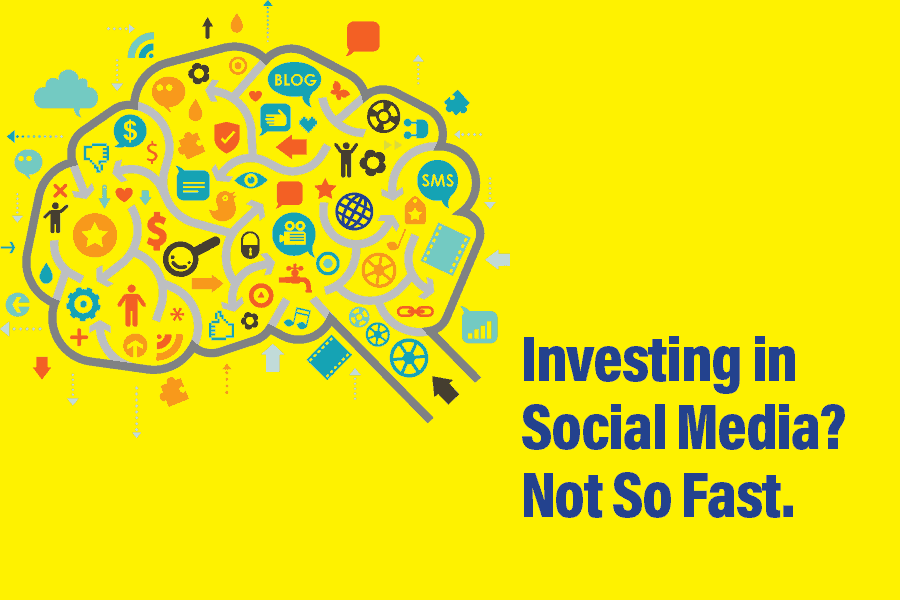It’s Only Icing on the Cake
A client we worked with, a breast cancer foundation, has over two million Facebook followers. It’s an impressive number. However, this organization is already well positioned to use social media. Why?
- For starters, breast cancer can affect women and men (most people don’t realize that). It also affects spouses, children, loved ones and friends.
- And second, women are generally more sociable than men — both online and off.
- Third, this organization has two full-time employees who work just on social media. They do not make donor calls or answer phones. They do not write thank-you cards, attend donor analysis meetings, or deal with the board. They do not have to handle irate donors or learn Blackbaud Analytics.
These two people above sit in front of a computer [in a dark room with no distractions] working on social media full time. They have also have a full-time assistant. In short, they don’t do a little bit of this and a little bit of that: They maintain a carefully strategized, laser-focused social media plan.
“Should we invest in social media for our #plannedgiving efforts?”
Probably not.
“What? Are you kidding?”
No, I’m not.
Only a handful of nonprofits succeed in social media marketing because they can’t (or won’t) spend the time, effort and money needed to do it right. (Of course, if you wish to outsource, we can help.)
Doing it right?
Successful social networking requires:
- Promotions from all venues
- Constant, daily monitoring
- Consistent posts to all your sites — Twitter, Facebook, LinkedIn, etc.
- Embracing the online social networking culture
- Cultivating participation
- Creating engagement activities
- Repeat. Repeat.
“That’s a lot of work.”
Exactly.
Even the miraculous Internet will not give you something for nothing. Ask yourself: Can you spend 3 to 4 hours a day updating your social media outlets? And is it even worth it? If not, focus on other tasks that are already working for you today — like calling donors and sending direct mail.
Look at the graphic illustration above. Doesn’t it give you a headache?
“So you’re saying just ignore social media?
I’m not opposed to social media. I am opposed to following the herd (that’s why the top 5% do not). And I’m opposed to hopping from this year’s hype and hoopla to the next. Social media isn’t bad, but it will distract you from other venues that are already getting you results. So ignore peer pressure and do it only if you have the commitment and resources to do it right. Focus on what you do best and what’s working for you already
“But I see many nonprofits on Facebook.”
That’s great. But many are not. And even among those that are, many are doing it with little effort or care: incompetently, inadequately, without commitment and with little or no direction
If your organization already has social media outlets, great! Use them to promote your fundraising efforts, instead of wasting time creating your own outlets.
“Can we outsource our social media?”
“Social media experts” are a dime a dozen, so proceed with caution. The best part about social media is when you give your audience the “inside scoop” on your organization and they feel like part of the club. The problem is, it’s hard to achieve an intimate, personal tone when an outsider is posting on your behalf. That’s why in most cases the best way to update your pages is in-house. (However, if you have the budget to outsource, we can help — unlike other vendors, we work closely with you to match your “voice” and focus on what’s important to your organization).
“Are there exceptions to the rule?”
Of course. First, ask whether you have the time for social media. If you’re already doing a bang-up job at direct mail, visiting prospects and dining with donors, and still have time and resources left over, then by all means, go to town. But I doubt this to be true.
Second, make sure you have the budget. Our social media services begin at $26,000 per year.
“So who’s raising money from social media?”
The people promoting it. The “social media experts” who want a handsome hourly rate to update your Facebook and tweet for you. Even organizations like the breast cancer foundation I mentioned aren’t counting on social media to rake in the big bucks. It’s a component of bigger strategy — icing on the cake. Consider this: the majority of money is donated offline, and what’s donated online is mostly for annual gifts or crowdfunding.
Even organizations like the breast cancer foundation I just mentioned aren’t counting on social media to rake in the big bucks. It’s a component of bigger strategy, icing on the cake perhaps.
Planned giving moves 25 times slower than cash giving — so do the math.
“So should I use social media at all?”
Social media can help your organization build relationships with your current base of donors. But treat it like the tool it is — just another marketing vector, not a silver bullet. Tag along with your organization’s existing social media outlets, and let the marketing department take the ball and run with it. Set aside 10 minutes a week to check in with them to make sure planned giving is being represented well.
“Should we place social media widgets on planned giving websites?”
Sure, do it. It’s easy, it’s free, and we’ve been doing it for years for our clients.
“Google?”
Do not ignore direct mail. Even Google is now using the US Postal Service to advertise its services. Yes, that paper stuff you get in the mail with a real stamp on it.
By the way, did you hear that Google+ is the next best thing? Right along with MySpace.
Social media is a moving target. Adjust your aim accordingly.
Viken Mikaelian Tweet






